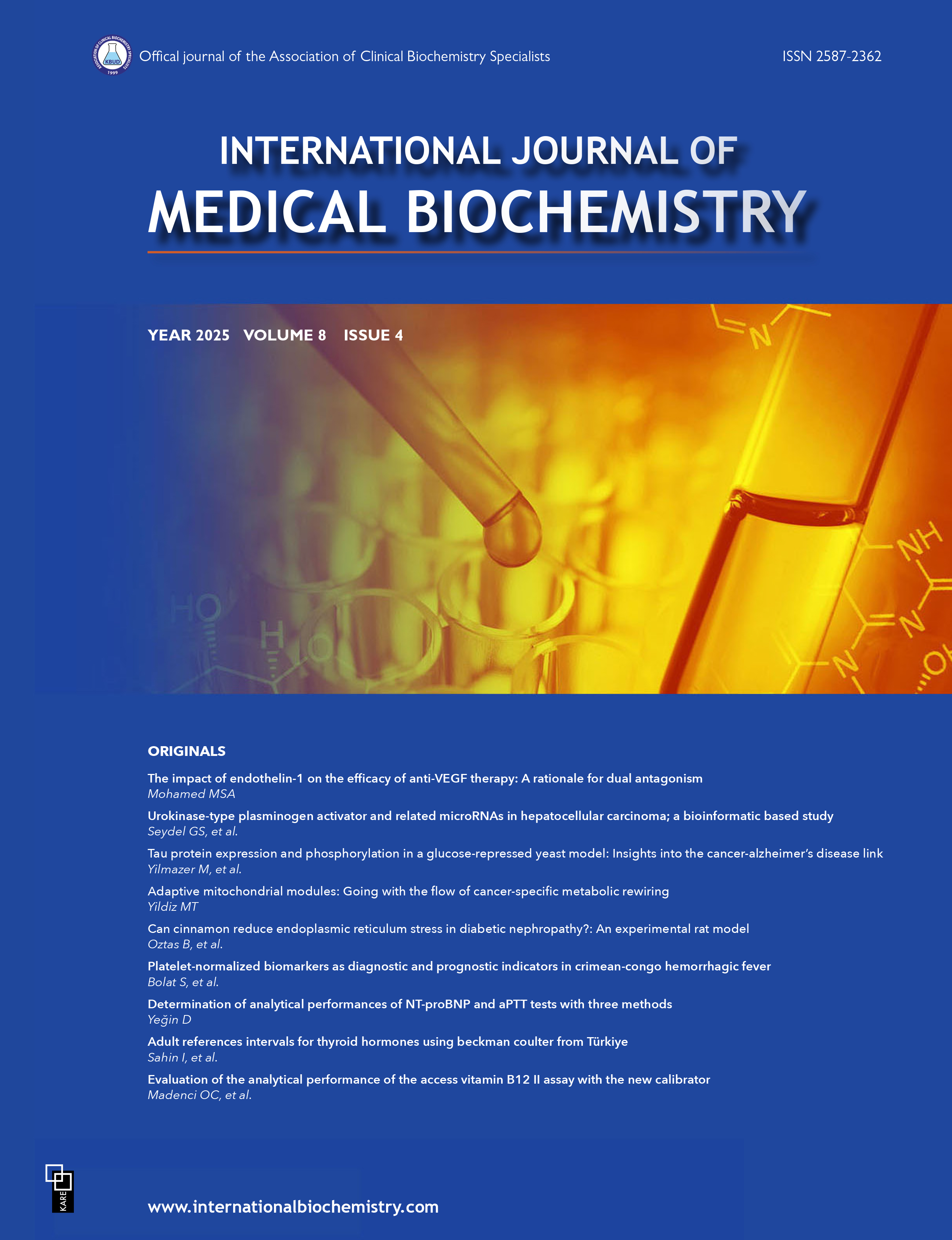Evaluation of the analytical performance of the access vitamin B12 II assay with the new calibrator
Ozlem Cakir Madenci, Alper KutukcuDepartment of Biochemistry Laboratory, Dr. Lutfi Kirdar Kartal City Hospital, Istanbul, TürkiyeINTRODUCTION: We aimed to compare the analytical performance of the Access Vitamin B12 assay with the new B12 II calibrator to the current Access and Abbott assays and determined the method-specifc reference interval.
METHODS: The new B12 II was assessed for imprecision, accuracy, analytical sensitivity, linearity, and carryover. Bland-Altman, Passing Bablok, and concordance correlation coefficient (CCC) analyses were performed on 650 samples. Vitamin B12 tests were performed using the UniCel DxI 800 (Beckman Coulter, USA), and Alinity i System (Abbott Laboratories,
Abbott Park, IL, USA) analyzers.
RESULTS: The Access new B12 II assay demonstrated acceptable analytical performance; however, its reference range (138-787 pg/mL) was lower than the manufacturers recommendation. The Access Vitamin B12 assay showed significant negative differences of 45.8% and 37.0% relative to the Abbott and new B12 II assays, respectively, while the new B12 II assay showed a smaller difference of 9.4% against Abbott. Significant proportional and constant errors were observed between Access and new B12 II (slope: 0.780, intercept: -21.95) and Access and Abbott (slope: 0.707, intercept: -18.95). Abbott and new B12 II demonstrated lower proportional and constant errors (slope: 0.902, intercept: 6.388). Concordance analysis indicated poor agreement of the Access assay with both Abbott and new B12 II (CCC: 0.806, 0.879), whereas Abbott and new B12 II demonstrated substantial agreement (CCC: 0.958).
DISCUSSION AND CONCLUSION: The new B12 II assay demonstrated appropriate analytical performance and improved consistency with the Abbott assay. The reference interval we established differed from the manufacturers suggested range, highlighting the importance of determining population-based reference intervals.
Keywords: Calibration, reference standards, vitamin B12, vitamin B12 deficiency
Manuscript Language: English







